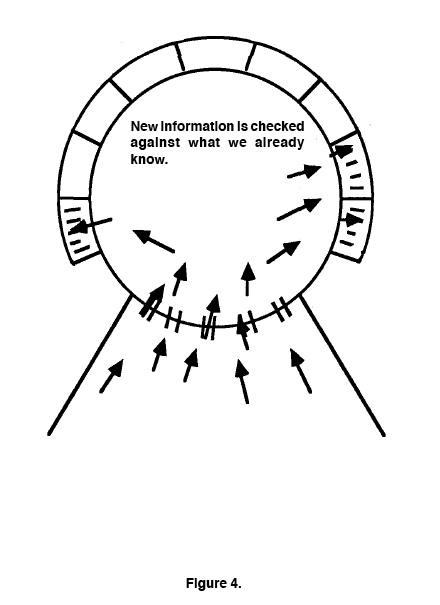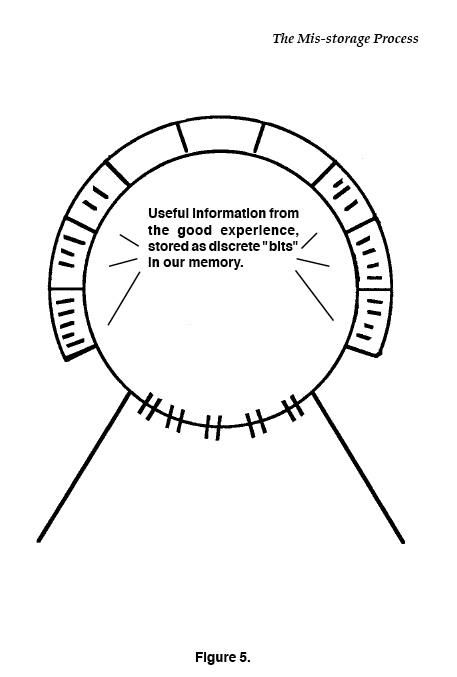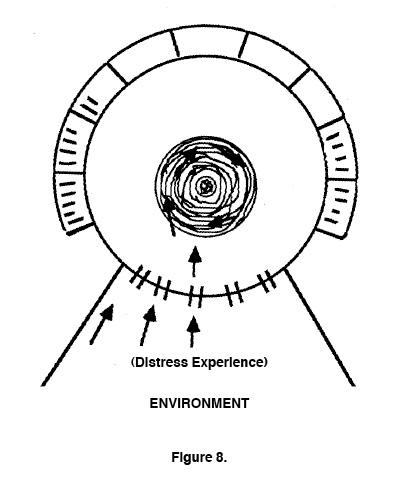CHAPTER IX: The Mis-storage Process
Though the “thinking machinery” is shut down and inoperative during the distress experience, the information input from all the environment which it usually handles suspends very little, if at all. Information continues to enter the distressed, non-thinking person in great volume through the senses of vision, sound, touch, etc.
This information input during a distress experience stores, or, more correctly, mis-stores, in a very different way from the usual information input that we take in during a non-distressing experience.
Information from a good experience becomes useful information which we can use to handle the next experience more “wisely.” (Fig. 4)

(Incidentally, the usual information storage is done, apparently, in “discrete bits”; i.e., we can remember and use information from a good experience either piece by piece or all together, as we choose.) (Fig. 5)

The mis-storage of the information received during a distress experience is very different. It can be described in several ways.
If we think of our flexible intelligence as if it were gear-and-cog computing machinery, then the information input during a distress experience acts as if it deposited onto this machinery when it was shut down, piled up on the gears and cogs in a certain area and jammed them. (Fig. 6)

When one comes upon this residue in a person’s behavior and feelings later, the impression is very much that of a frozen, nonsensical rigidity. Unless the observer knows how this residue got there it seems to make no sense at all.
In another way, this mis-storage behaves as if it were a rigid scar on what used to be flexible surface. (Fig. 7)

Information from a distress experience is not available bit by bit, but only in one big tied-together chunk. If this information is recalled at all, it all comes together, unevaluated, not understood.
In yet another important way, the mis-stored information input from a distress experience behaves as if it were a recording, a very literal, detailed, complete recording of everything that went on during that distress experience. (Fig. 8)

It is as if the sights, the sounds, the tastes, the touches, the temperatures, the balances and all the rest of the information together with the feelings of distress and the inability to think were all recorded simultaneously on one ninety-channel record.